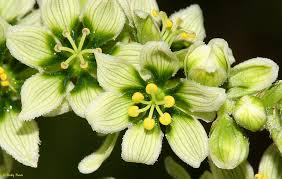Happy St Patrick’s Day, everyone! To celebrate this classic holiday, we decided to brainstorm all things St Patty-related and see whether there is an ICD-10 code associated...which is somewhere on the fun scale between getting pinched by someone and playing beer pong with green beer. Let’s get started!
Green sickness (D50.8): The color green has long been associated with St Patrick’s Day, Ireland, and more, although there are many possible origins for the association. Here are some of the more common ones: Ireland is often referred to as ‘the Emerald Isle,’ St Patrick apparently used a green clover to describe the basic tenets of Catholicism, and green is prominent in the national flag (one of three colors). Or, you could go with this slightly-more-exciting version of the story: leprechauns are mischievous little creatures, and they have a tendency to pinch anyone they see. According to folklore, leprechauns can’t see green, and thus the tradition of wearing green arose.
When it comes to ICD-10 codes though, green sickness is something else entirely. D50.8 is more formally known as “other iron deficiency anemias,” and references hypochromasia. This occurs when a person has an iron deficiency that leads to a decreased amount of hemoglobin in their bloodstream. In many cases, increasing dietary iron can improve this condition...so feel free to have a bratwurst or three, as well as enjoy some green leafy vegetables like spinach (which should help keep you clear of pinching leprechauns).
Speaking of green, have you ever heard of green hellebore plants? These are flowering plants, often with greenish, purplish, or sometimes dark flowers and leaves. While they can be very pretty, many  species of hellebore are poisonous. In fact, that’s where they run into ICD-10 coding! If someone were unintentionally to ingest green hellebore, they would be suffering some toxic effects (T62.2X1). If they were to ingest the plant intentionally and suffer toxic effects, the appropriate code would be T62.2X2. And - scarily - the code for someone suffering toxic effects from ingesting a dangerous plant as an assault is T62.2X3. Of course, it’s rather far-fetched that miscreants will be stalking the streets armed with green hellebore, but be sure to avoid ingesting green plants you don’t recognize regardless!
species of hellebore are poisonous. In fact, that’s where they run into ICD-10 coding! If someone were unintentionally to ingest green hellebore, they would be suffering some toxic effects (T62.2X1). If they were to ingest the plant intentionally and suffer toxic effects, the appropriate code would be T62.2X2. And - scarily - the code for someone suffering toxic effects from ingesting a dangerous plant as an assault is T62.2X3. Of course, it’s rather far-fetched that miscreants will be stalking the streets armed with green hellebore, but be sure to avoid ingesting green plants you don’t recognize regardless!
And just because we haven’t discussed green objects enough, let’s take a look at one more ICD-10 code that discusses the color. Green soap is a vegetable oil-based cleanser and detergent that is used in a variety of applications. While it is generally a mild compound, it can be poisonous when ingested - especially by children, dogs, cats, and other small critters. T49.2X1 is the code for “accidental poisoning by local astringents and local detergents.” While green soap isn’t always green, its name is enough to warrant mention here.
So there you have it - just about everything to do with the color green in the tens of thousands of ICD-10 codes. In case you haven’t gotten your St Patty’s Day fix yet, check out last year’s blog, where we discussed green beer and hangovers. For all other questions, like how to continue a successful ICD-10 transition, please visit our website or give us a call!



